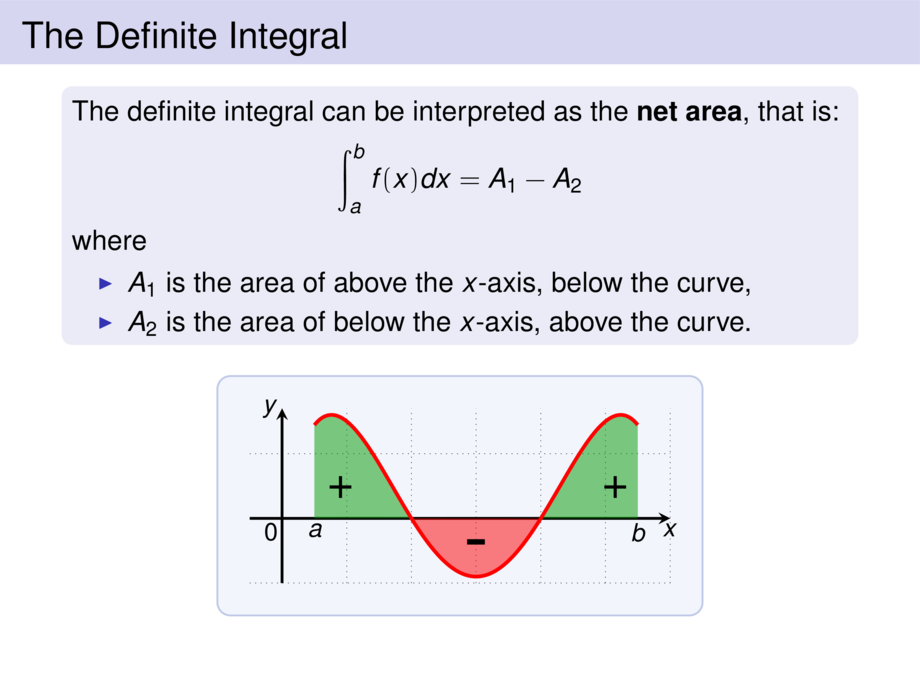



































































































27/111
\begin{frame}
\frametitle{The Definite Integral}
\begin{block}{}
The definite integral can be interpreted as the \emph{net area}, that is:
\begin{talign}
\int_a^b f(x) dx = A_1 - A_2
\end{talign}
where
\begin{itemize}
\item $A_1$ is the area of above the $x$-axis, below the curve,
\item $A_2$ is the area of below the $x$-axis, above the curve.
\end{itemize}
\end{block}
\medskip
\begin{center}
\scalebox{.9}{
\begin{tikzpicture}[default]
\def\mfun{(-.9 + (\x-3+\mfunshift)^2 - .1*(\x-3+\mfunshift)^4)}
\diagram[1]{-.5}{6}{-1}{1.7}{1}
\diagramannotatez
\def\mfunshift{0}
\begin{scope}[ultra thick]
\draw[fill=cgreen,draw=none,opacity=.5] plot[smooth,domain=.5:2,samples=100] (\x,{\mfun}) -- (.5,0) -- cycle;
\draw[fill=cred,draw=none,opacity=.5] plot[smooth,domain=2:4,samples=100] (\x,{\mfun}) -- cycle;
\draw[fill=cgreen,draw=none,opacity=.5] plot[smooth,domain=4:5.5,samples=100] (\x,{\mfun}) -- (5.5,0) -- cycle;
\draw[cred] plot[smooth,domain=.5:5.5,samples=100] (\x,{\mfun});
\node[anchor=north] at (.5,0) {$a$};
\node[anchor=north] at (5.5,0) {$b$};
\node[scale=1.8] at (.9,.5) {+};
\node[scale=1.8] at (5.15,.5) {+};
\node[scale=3] at (3,-.5) {-};
\end{scope}
\end{tikzpicture}
}
\end{center}
\vspace{10cm}
\end{frame}

